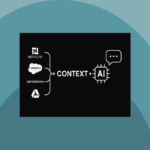Artificial neural networks are used in deep learning, a machine learning approach, to extract knowledge from data. And it’s quite popular right now! Giving computers the ability to learn mostly from data on their own is known as machine learning. You may, for example, put in place a machine-learning system that can differentiate between images of dogs and cats. The algorithm may not be particularly good at it at first. However, the algorithm will learn to discriminate between cats and dogs as you teach it with samples of each. If you are truly interested, here are some Deep Learning Courses to consider.
Machine learning is a subset of artificial intelligence, as it is thought that the capacity to “learn” is a hallmark of intelligence. Furthermore, machine learning is a subset of deep learning. While it tackles the issue using neural networks, its objective is the same as machine learning—that is, to teach computers to learn. What exactly are neural networks now?
In short, neurons—software neurons, that is, not neurons in the biological sense—are the building blocks of neural networks. They function similarly to neurons in our brains in that they can receive, process, and transmit information, which is why we have given them that name.
Top Deep Learning Courses

1. Neural Networks and Deep Learning
Neural Networks and Deep Learning from Deep Learning is our top choice for the finest Deep Learning Courses available on Coursera. This course will assist you in breaking into the cutting edge of AI.
This course is rated so highly because it’s an excellent way to master the basics of deep learning and because it’s taught by none other than Andrew Ng, a well-known person in the machine learning community. Rather than providing a cursory explanation, the course teaches you the inner workings of deep learning.
By the end of the course, you will have a better understanding of the main technological trends influencing deep learning, be able to construct, train, and use fully connected deep neural networks, be able to implement effective (vectorized) neural networks, be aware of the important architectural parameters of neural networks, and—best of all—learn how to build a deep neural network that can recognize cats.
Provider: Coursera.
Instructor: Andrew Ng.
Duration: 27 Hours.
2. 6.S191: Introduction to Deep Learning
MIT’s introductory course, which has been offered annually since 2017 and is available to all students, will teach you the fundamentals of deep learning and provide you with hands-on experience creating neural networks in TensorFlow. You will discover how deep learning techniques apply to several fields, including biology, computer vision, and natural language processing!
Since the course curriculum varies by year, we will not discuss the material covered in the most recent session. The course website has the material available. A basic understanding of calculus and linear algebra, including matrix multiplication and derivatives, is required for this course. Python experience is also advantageous, but not required.
Provider: MIT OpenCourseWare.
Instructor: Alexander Amini and Ava Soleimany.
Duration: 20-50 Hours.
3. DS-GA 1008: Deep Learning
With applications to computer vision, natural language comprehension, and speech recognition, DS-GA 1008: Deep Learning covers the most recent advances in deep learning and representation learning. This is one of the Best Deep Learning Courses on supervised and unsupervised deep learning, embedding techniques, metric learning, convolutional and recurrent nets, and more.
None other than Yann LeCun, a well-known machine learning expert and the man credited with creating convolutional neural networks, is teaching the course. Here, you’re studying under the greatest. This is the webpage for the course. Completing DS-GA 1001 Intro to Data Science or a graduate-level machine learning course is required for this course.
Provider: YouTube.
Instructor: Yann LeCun and Alfredo Canziani.
Duration: 45 Hours.
4. Intro to Deep Learning with PyTorch
The AI revolution is being driven by deep learning, and PyTorch is making it simpler than ever for anybody to develop deep learning apps. Intro to Deep Learning with PyTorch, a course offered by Facebook on Udacity, teaches you the fundamentals of deep learning and how to use PyTorch to create your deep neural networks.
Through coding exercises and projects, you’ll have hands-on experience creating and training deep neural networks. Additionally, you’ll use text creation and style transfer to develop cutting-edge AI applications.
You must be familiar with Python and data processing packages like NumPy and Matplotlib to succeed in this course. While not necessary, a basic understanding of calculus and linear algebra is advised to finish the problems.
Provider: Udacity.
Instructor: Luis Serrano, Alexis Cook, Soumith Chintala, Cezanne Camacho, and Mat Leonard.
Duration: 8 Weeks.
5. Practical Deep Learning For Coders
Fast and useful deep learning for programmers. AI begins with learning how to set up a GPU server that is appropriate for deep learning and continues all the way to developing cutting-edge models for computer vision, natural language processing, recommendation systems, and other applications!
You will also learn how to utilize the PyTorch and fast.ai libraries in this course. PyTorch functions best as a low-level library, whereas fast.ai extends PyTorch’s capability to a higher level. This one of the popular Deep Learning Courses is great since it shows you how to set up a cloud GPU for model training and how to develop and experiment with code using Jupyter Notebooks.
Anyone with at least a year of coding experience—preferably in Python—and a rudimentary understanding of high school arithmetic is eligible to enroll in this course.
Provider: fast.ai.
Instructor: Jeremy Howard.
Duration: 70 Hours.
6. Introduction to Deep Learning & Neural Networks with Keras
The topic of deep learning is introduced to you in IBM’s Introduction to Deep Learning & Neural Networks with Keras. While you won’t learn all there is to know about deep learning in this course, you will learn enough to begin taking more advanced classes and studying on your own.
Using the Keras library, you will create your first deep learning model and learn about other deep learning models. By the end of the course, you will be able to explain deep learning models and neural networks, comprehend supervised and unsupervised deep learning models (autoencoders and restricted Boltzmann machines), as well as convolutional and recurrent neural networks. But most importantly, you will be able to create deep learning networks and models with the Keras library.
Provider: IBM.
Instructor: Alex Aklson.
Duration: 15 Hours.
7. Deep Learning with PyTorch: Zero to GANs
Jovian offers a coding-first introduction to deep learning using the PyTorch framework in Deep Learning with PyTorch: Zero to GANs. Because it requires no previous experience of deep learning (you may start from zero), the course is dubbed “Zero to GANs.” After six weeks, you will be comfortable creating Generative Adversarial Networks, or GANs.
While this course is appropriate for novices, it is advised to have some programming experience, ideally in Python, as well as a working grasp of the fundamentals of both calculus and linear algebra, including differentiation and geometric interpretation of derivatives.
Provider: Jovian.
Instructor: Aakash N S.
Duration: 12 Hours.
8. Probabilistic Deep Learning with TensorFlow 2
One of the Best Deep Learning Courses Probabilistic Deep Learning with TensorFlow 2, offered by Imperial College London, focuses on the probabilistic approach to deep learning—getting the model to know what it doesn’t know—and expands on the fundamental ideas of TensorFlow 2. Using the TensorFlow Probability package in particular, you will learn how to create probabilistic models using TensorFlow.
The specialization’s first two courses, “Getting started with TensorFlow 2” and “Customizing your models with TensorFlow 2,” are continued in this course. A strong foundation in probability and statistics (e.g., standard probability distributions, probability density functions, maximum likelihood estimation) is the extra prerequisite knowledge necessary to succeed in this course.
Provider: Coursera.
Instructor: Kevin Webster.
Duration: 53 Hours.
9. Machine Learning with Python: from Linear Models to Deep Learning
Have you gone over every course in the past and recognized that, while you don’t have a solid understanding of machine learning, you do want to learn about deep learning in the future? This demanding course at MIT is for you if you’re eager to take on some mathematics and are up for the challenge!
With a practical approach, Machine Learning with Python: From Linear Models to Deep Learning introduces you to the subject of machine learning, covering topics such as reinforcement learning and deep learning in addition to linear models. In many Python projects created for various real-world uses, you’ll put the algorithms into practice and experiment with them.
You should be skilled in vectors and matrices, probability theory (6.431x), college-level single and multivariable calculus, and Python programming (6.00.1x) to succeed in this course.
Provider: edX.
Instructor: Regina Barzilay, Tommi Jaakkola, and Karene Chu.
Duration: 150-210 Hours.
Final Notes
To sum up, deep learning is a fast-developing science that is always pushing the envelope. To maintain their competitiveness in the job market, professionals need to keep up with the most recent developments.
You will have the opportunity to learn more about advanced deep-learning subjects and acquire the abilities required to take on challenging projects by enrolling in one or more of the best courses we have mentioned. These courses have something to offer everyone, regardless of their expertise or level of familiarity with deep learning. So, register for any one of the Deep Learning Courses right now to advance your profession!
FAQ
Q: Before studying deep learning, what should I know?
A: Establishing a solid foundation in the following areas is essential before delving into deep learning: Fundamental Mathematics & Statistics: To understand the fundamental ideas behind deep learning algorithms, one must have a solid understanding of probability, statistics, linear algebra, and calculus.
Q: What is deep learning’s primary drawback?
A: The overfitting issue with deep learning is one of its main drawbacks. When a model exhibits overfitting, it performs well on training data but poorly on unknown data. As a consequence, the model can provide inaccurate or irrelevant results.
Q: How lengthy is the deep learning process?
A: In around six months, one may study, follow, and contribute to state-of-the-art work in deep learning. The steps to do it are outlined in this article. – You are somewhat proficient at programming. You ought to feel at ease learning Python as you go.








Very nice post. I just stumbled upon your blog and wished to say that I’ve truly enjoyed browsing your weblog posts. After all I’ll be subscribing on your feed and I’m hoping you write once more very soon!
Thank you so much for the kind words! I’m really glad you enjoyed the posts. Happy to have you as a subscriber — more content coming very soon!